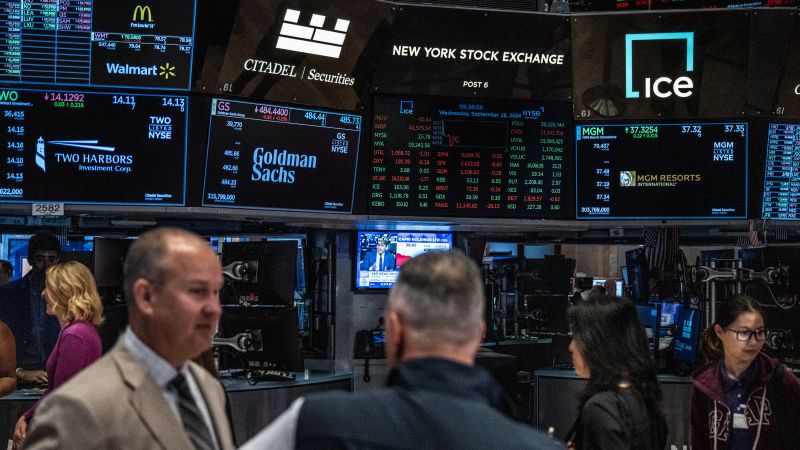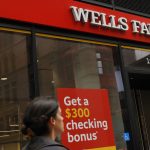A version of this story appeared in CNN Business’ Nightcap newsletter. To get it in your inbox, sign up for free, here.
Dare I say it but: We may have finally vanquished the vibecession.
Hear me out.
No one likes being told the economy is good when their own personal financial situation is rocky. So I won’t tell you everything’s great. But there are, for the first time in years, a lot of mood-boosting economic changes coming our way (even as we continue to nurse a housing hangover that is, admittedly, a real vibe killer).
As Sherwood’s Matt Phillips wrote last week, the era of “persistently meh-to-bad vibes” is almost over thanks to two particularly important factors: Gas prices are falling while stocks are surging.
Neither the level of the Dow nor the price of a gallon of fuel alone tells us much about the state of economy — in fact, they both tend to move independently of broader economic forces like employment and housing. But they are, as economists like to say, psychologically important.
Most of us aren’t poring over payroll data every week or keeping tabs on global crude output. But you might see headlines about the Dow surging. And you almost certainly know down to the penny how much it costs to fill your car’s tank.
It’s vibenomics 101: stocks up + gas down = good vibes.
The average price of a gallon of gas in the US, currently $3.21, could fall below $3 by the end of October, if not sooner. That’d be good news for drivers as well as Democrats, as presidential approval ratings tend to improve when gas is cheap (even though the president has zero direct control over the global oil market that determines prices).
US stocks hit record highs last week after the Fed’s interest-rate cut, and all three major indexes are on track to have a positive September — historically the worst month for Wall Street.
But wait! There’s more.
After two years of the double pain of inflation and high interest rates, those things are normalizing.
The Fed, signaling confidence that the inflation fight is won, slashed interest rates for the first time in four years, and signaled more are on the way. That makes it easier for businesses to borrow money and expand their operations, and it takes some of the pain out of paying your credit-card bills, among other things.
Meanwhile, unemployment remains low, around 4%, and wage growth has been outpacing inflation for a year and a half.
All of that bodes well for the consumers who power the economy.
The “vibecession,” a term popularized in 2022, captured popular sentiment that the economy wasn’t as good in reality as it looked on paper. Sure, jobs were plentiful and the economy was growing, but the combination of high prices and high interest rates felt demoralizing.
It’s hard to overstate how much interest rates can change the economic mood, Brendan Duke, a senior director for economic policy at the Center for American Progress, told me.
“A lot of people have been saying for the last year, ‘it’s going to take time for the falling inflation rate and falling interest rates to start to register in people’s minds,’” he said. “And I think that’s finally starting to hit.”
Of course, if there is one part of the economy that can really sour all the good news, it’s housing.
Let’s not sugarcoat it: Shelter costs are stupidly high for millions of renters, and potential buyers have been shut out by high prices, low supply and high mortgage rates. And while the Fed’s rate cut may help break the “lock-in” effect that’s kept sellers on the sidelines, the housing crisis is a gnarly problem that goes beyond the Fed’s jurisdiction.
To be sure, mortgage rates have been coming down for months, and they could soon drop below 6%. But that’s likely to strain supply even more as buyers come into the market.
By some estimates, we need as many as 7 million new units to stabilize the housing market. And while both Vice President Kamala Harris and former President Donald Trump have proposed ways to increase the housing supply, the process will take years.
The shortage of homes has helped propel prices to record highs. According to the National Association of Realtors, the median existing-home sales price was $416,700 in August, down slightly from the record high of $426,900 set in June.
It’s not a hopeless situation, but it is a deeply rooted one with supply issues going back to the 2008 recession.
“There are economic trends like falling interest rates, and there are policies like making an investment in housing supply that can move the needle,” Duke says. “But I think housing is going to consistently be a challenge for Americans because, first, it took us so long to dig into this hole. And second, it’s a challenge in a lot of our peer countries — Canada, Australia, New Zealand, they’re having the exact same problem.”
Read the full article here




